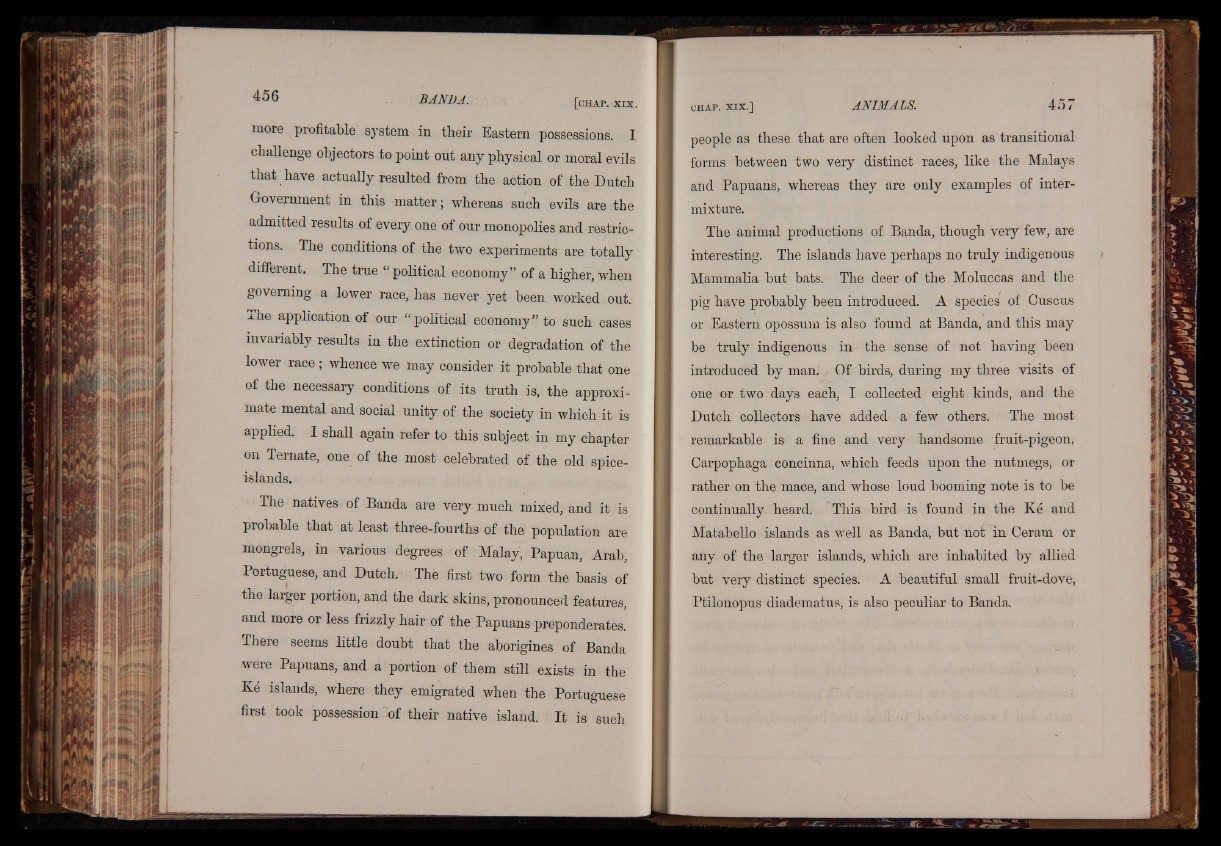
more profitable system in their Eastern possessions. I
challenge objectors to point ont any physical or moral evils
that have actually resulted from the action of the Dutch
Government in this matter; whereas such evils are the
admitted results of every one of our monopolies and restrictions.
The conditions of the two experiments are totally
different. The true “ political economy” of a higher, when
governing a lower race, has never yet been worked out.
a he application of our “ political economy” to such cases
invariably results in the extinction or degradation of the
lower race ; whence we may consider it probable that one
of the necessary conditions of its truth is, the approximate
mental and social unity of the society in which it is
applied. I shall again refer to this subject in my chapter
on Ternate, one of the most celebrated of the old spice-
islands.
The natives of Banda are very much mixed, and it is
probable that at least three-fourths of the population are
mongrels, in various degrees of Malay, Papuan, Arab,
Portuguese, and Dutch. The first two form the basis of
the larger portion, and the dark skins, pronounced features,
and more or less frizzly hair of the Papuans preponderates.
There seems little doubt that the aborigines of Banda
were Papuans, and a portion of them still exists in the
Ké islands, where they emigrated when the Portuguese
first took possession of their native island. It is such
people as these that are often looked upon as transitional
forms between two very distinct races, like the Malays
and Papuans, whereas they are only examples of intermixture.
The animal productions of Banda, though very few, are
interesting. The islands have perhaps no truly indigenous
Mammalia but bats. The deer of the Moluccas and the
pig have probably been introduced. A species of Cuscus
or Eastern opossum is also found at Banda, and this may
be truly indigenous in the sense of not having been
introduced by man. Of birds, during my three visits of
one or two days each, I collected eight kinds, and the
Dutch collectors have added a few others. The most
remarkable is a fine and very handsome fruit-pigeon,
Carpophaga concinna, which feeds upon the nutmegs, or
rather on the mace, and whose loud booming note is to be
continually- heard. This bird is found in the Ke and
Matabello islands as well as Banda, but not in Ceram or
any of the larger islands, which are inhabited by allied
but very distinct species. A beautiful small fruit-dove,
Ptilonopus diadematus, is also peculiar to Banda.